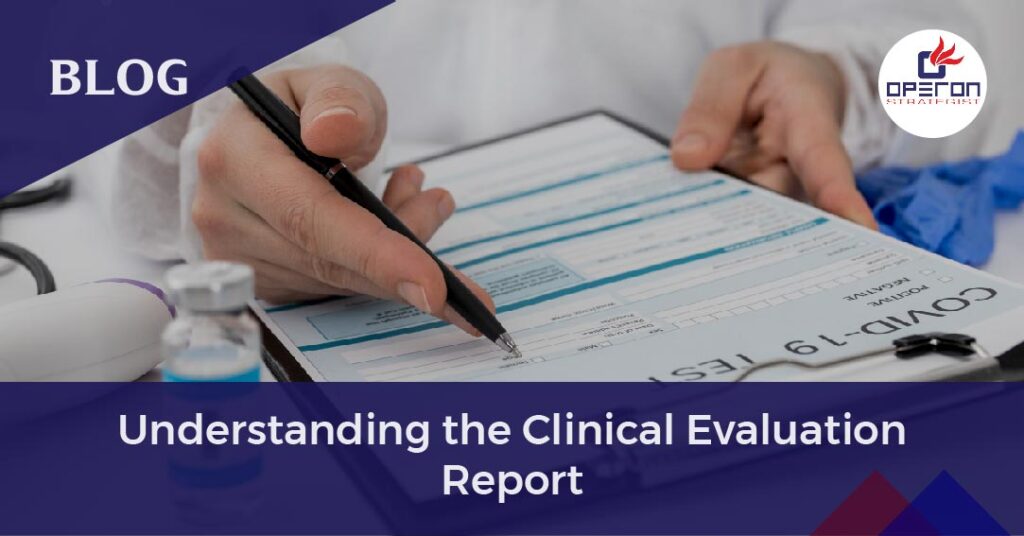Key Aspects of Clinical Evaluation Reports (CERS) in Devices:
A Clinical examination Report (CER) documents the findings from a clinical examination of your medical product. A CER is made up of evaluated clinical data acquired either from a clinical investigation of your product or the results of multiple investigations on significantly similar devices. The CER demonstrates that your item fulfills its intended purpose without exposing clients and patients to additional risk.
In Europe, every piece of medical equipment must have a Clinical Evaluation Report. You should provide your CER to your Notified Body as a link to your European CE Technical file. The Technical File is a basic step toward obtaining CE Marking for your item, which is required to sell or distribute medical devices in Europe.
Looking For a Medical Device Regulatory Consultant?
Let’s have a word about your next project
Medical device manufacturers must analyze clinical data from their device or an identical device with comparable security and clinical performance. The MDR requires medical device manufacturers to evaluate three criteria to verify an item’s identicality: biological, technological, and clinical.
Phases of Clinical Evaluation Reports (CERS) in MDR Compliance:
The MDR places a strong emphasis on Clinical Evaluation Reports, or CERs. The Clinical Evaluation Report is part of the Technical File, which is the principal paperwork demonstrating regulatory compliance and providing all information about the device. Medical device organizations must take a few steps to guarantee that their CER is robust, consistent, and well-maintained. Clinical Evaluation Report documentation typically includes four phases:
- Defining the scope of the device, its intended use, and therapeutic/diagnostic claims.
- We are identifying and validating clinical information.
- It is analyzing and evaluating the data to ensure that it fits all requirements.
- It is identifying risks and uncertainties, which may be addressed during post-market surveillance.
Clinical Evaluation Report for Medical Device:
A Clinical Evaluation Report (CER) for a Medical Device is a document that summarizes the results of the clinical evaluation performed on the medical device using all relevant clinical data available.
The CER and clinical data are used together to demonstrate the medical device’s resemblance to general safety and performance requirements. The CER includes clinical foundation details, current knowledge, and best-in-class data that can be used to analyze the device’s security and execution in comparison to its expected purpose.
If there is a settled CE-marked device that is similar to the device under examination, the reports from that device can be used to establish the security and execution of the device under evaluation by arguing equivalence, provided an agreement is reached between the two makers. Details of the post-market actions directed are also provided in the CER, which is used to address any unsolved questions or residual concerns that are not covered by the available clinical data.
In addition, the results of the numerous tests are listed to illustrate the device’s safety and performance. During the investigation of the appraised information, the prerequisites for security, execution, agreeability of advantage/hazard profile, and symptoms are surveyed to establish GSPR adjustment.
Conclusion of CER:
CER involves the acceptability of the risk-benefit profile based on current knowledge/state of the art in the relevant medical domains, as well as viable medical alternatives. It also considers the sufficiency of the information materials provided, the intended purpose and risk reduction strategies, and any disparities.
A summary of the device’s suitability, including its IFU, for the intended users and usability aspects, as well as any contradictions and the adequacy of claims. If there is consistency between clinical data, information materials, and risk management paperwork for the device under examination, any inconsistencies should be highlighted. The CER is used to evaluate and prove that the device is safe for human use and operates as predicted when used following the manufacturer’s instructions.
Furthermore, the CER demonstrates that the device’s existence on the market is acceptable because any adverse effects or dangers are balanced by its benefits.
Device Under Clinical Evaluation:
The device under evaluation part is designed to describe the device while also depicting the procedures used for the CER and data examination. It should have a few sections, including the reason for the clinical evaluation, a demonstration of equality (if applicable), and the clinical informative indexes used. This segment must discuss if the clinical evaluation is based on logical writing and justify proportionality if clinical information is not appropriate for the device.
Type of Evaluation:
Demonstration of equivalency
Data is generated and stored by the manufacturer.
- Post-market surveillance
- Post-market clinical follow-up
- Relevant Pre-clinical studies
- Biocompatibility testing (biological and clinical equivalence)
- Bench testing (technical and clinical equivalence)
- Electrical safety
- Software verification and validation
Data retrieved from the literature
Summary and appraisal of clinical data
Analysis of the clinical data
- Requirement on Safety
- Requirement on acceptable benefit/risk profile
- Requirement on Performance
- Requirement on the acceptability of undesirable side effects.
Preparing a clinical evaluation report (CER) takes effort, but it is also a live document. As a result, you must have a post-market monitoring plan in place for each medical device or device family that defines how frequently your clinical evaluation report (CER) should be reviewed and updated. Depending on the nature of your device and the quantity of clinical history associated with it, you may additionally need to undertake a post-market clinical follow-up study (PMCF). Any post-market surveillance that you do should be included as part of the clinical evaluation report.
Do You Want to Create a Clinical Evaluation Report?
Operon Strategist specializes in assisting medical device makers with the difficulties of Clinical Evaluation Reports (CER). We provide full assistance in defining the device scope, validating clinical data, analyzing regulatory compliance, and meeting post-market surveillance needs. Operon Strategist ensures that your CER is robust, up to current, and fully consistent with regulatory standards, allowing you efficient CE Marking operations in Europe. Connect with Operon Strategist for More information.
- adminhttps://operonstrategist.com/author/admin-2/
- adminhttps://operonstrategist.com/author/admin-2/
- adminhttps://operonstrategist.com/author/admin-2/
- adminhttps://operonstrategist.com/author/admin-2/




